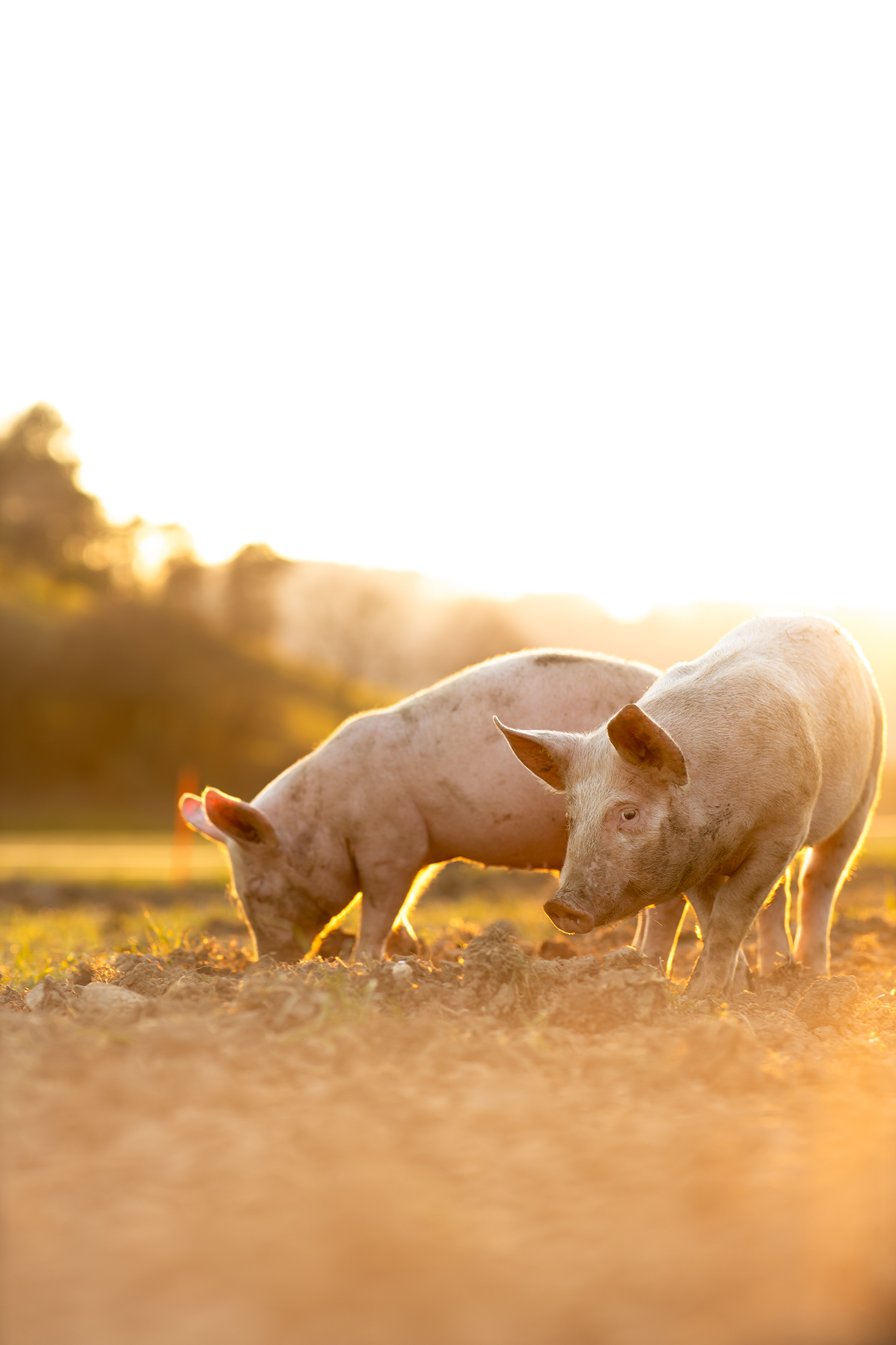Porcine Care
Cannon Republic provides beneficial microbiology that benefits pork production in several ways. Here are some of the ways that beneficial microbiology supports the health and productivity of pigs:
Digestive Health
Beneficial microbiology helps maintain a healthy balance of microorganisms in the pig’s gut, improving digestive health, and reducing the risk of digestive disorders. Probiotics and prebiotics promote the growth of beneficial bacteria and prevents the growth of harmful bacteria.
Feed Efficiency
Beneficial microbiology improves the efficiency of pigs to convert feed into meat. By improving the digestion and fermentation of feed in the gut, pigs can extract more nutrients from their feed, leading to improved growth, and meat quality.
Nutrient management
Microbiology plays a key role in managing nutrients in pork production. Optimizing the ratio of carbon to nitrogen in manure enhances microbial activity leading to more efficient breakdown of organic matter, less nutrient loss, and reduces negative environmental impact in confined areas.
Pathogen Control
Microorganisms play a role in controlling the growth of pathogens in pork production. Certain species of bacteria and fungi produce compounds that inhibit the growth of harmful microorganisms, reducing the risk of disease.
Waste Management
Microbiology plays a key role in managing the waste produced by pork production. Using microbial inoculants allows the organic matter in manure can be broken down more efficiently, reduces waste volume, and improves the quality of compost.

The Problem
A hog farm located in southeast US was faced with a 5,500,000-gallon waste lagoon that had gone septic. The lagoon had no presence of biological activity and the solids build-up on the surface of the lagoon was at a critical state. The twenty-year-old farm was also producing a high level of hydrogen sulfide odors. The odors would become so offensive at times that plant employees were unable to perform their dutiesbecause of respiratory problems and eye irritation.
The Solution
CR Foundation BR-1 treated the waste lagoon with a single application of the CR Foundation BR-1 product at a level of 45 PPM (250 gallons). There was an immediate noticeable reduction in offensive odors coming from the lagoon. Within 14 days, the lagoon was showing signs of increased biological activity and a substantial reduction in surface solids. At 21 days after treatment, the lagoon was extremely active with biological activity. The water had returned to a dull pink color and the surface solids were eliminated. The barns were treated for hydrogen sulfide with CR Foundation BR-1. The product was added to the 242-gallon rinse tanks in each barn at a rate one quart per tank. Each barn contained 2 tanks that were used to flush the pit area under the barns twice daily. The hydrogen sulfide reduction was immediate. Covers were removed from the junction boxes and no offensive odors were discovered. CR Foundation BR-1was also used in the cleaning process of the farrowing barn. The product was applied with the use of a chemical input line on a pressure washer at a rate of 6 ounces per gallon. The entire interior of the barn was washed with the product. The results were outstanding. The only odor apparent in the farrowing barn immediately following the treatment came from the feed in the barn. Application of the CR Foundation BR-1 continued for a test period of two months. The plant employees reported remarkable reductions in respiration and eye irritation side effects from the hydrogen sulfide odors.
Conclusion
The CR Foundation BR-1 product solved the TSS and BOD problems in the waste lagoon after a single treatment. The lagoon was functioning properly 21 days following treatment. Hydrogen sulfide odors were greatly reduced by using CR Foundation BR-1 in the pit rinse system at the farm.
